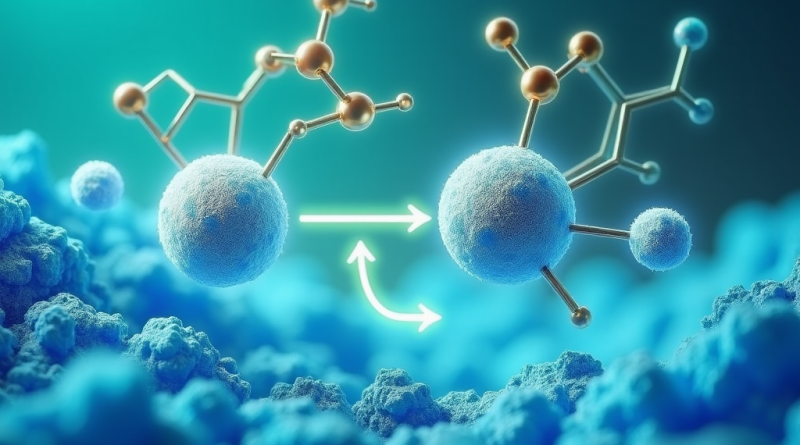The Role of Copper Sulfate Pentahydrate in Ellman’s Condensation: A Detailed Exploration
Ellman’s condensation is a chemical reaction that has found considerable use in synthetic organic chemistry. It involves the formation of specific compounds from an aldehyde and amine under controlled conditions. This reaction can be influenced by various reagents, one of which is copper sulfate pentahydrate. Copper sulfate pentahydrate (CuSO₄·5H₂O) is a widely used chemical in many applications, including as a catalyst in organic synthesis, water treatment, and agriculture. In this article, we will explore how copper sulfate pentahydrate can play a role in facilitating Ellman’s condensation reaction, and why its unique properties make it a candidate for this application.
What is Copper Sulfate Pentahydrate?
Copper sulfate pentahydrate is a blue crystalline solid that is commonly used in various fields of chemistry. It is composed of one copper atom, one sulfur atom, four oxygen atoms, and five water molecules, giving it its pentahydrate form. This chemical is highly soluble in water and possesses strong oxidative properties, making it useful as a catalyst in numerous organic reactions, including condensation processes like Ellman’s condensation.
Understanding Ellman’s Condensation
Ellman’s condensation, also referred to as a variation of the Aldol condensation, is primarily a reaction that combines an aldehyde or ketone with an amine, leading to the formation of imine derivatives. The resulting compounds are often useful intermediates for further chemical transformations. These products have applications in the production of pharmaceuticals, agrochemicals, and dyes.
The Role of Copper Sulfate Pentahydrate in Ellman’s Condensation
While copper sulfate pentahydrate is not always the first choice of catalyst in condensation reactions, its oxidative properties and ability to coordinate with various organic molecules make it a viable candidate. In Ellman’s condensation, copper sulfate pentahydrate can act as a Lewis acid to facilitate the formation of imines by coordinating with the oxygen or nitrogen atoms of the reactants.
Here’s how copper sulfate pentahydrate can influence Ellman’s condensation:
- Catalytic Role: Copper sulfate pentahydrate can act as a catalyst, helping to accelerate the reaction by stabilizing the transition state during the condensation of aldehyde and amine. It helps in the formation of the imine by activating the aldehyde and making it more electrophilic.
- Coordination Chemistry: The copper ion in copper sulfate pentahydrate can coordinate with the lone pairs of electrons present on the nitrogen in the amine group, making the nitrogen more nucleophilic. This increased nucleophilicity allows for more efficient attack on the carbonyl carbon of the aldehyde, speeding up the condensation process.
- Redox Mediation: Copper sulfate pentahydrate has oxidative properties that may allow it to mediate electron transfer during the reaction, ensuring the reactants stay in their optimal oxidation states for the reaction to proceed smoothly.
- Water of Crystallization: The water molecules in the pentahydrate form of copper sulfate play a significant role in the reaction environment. They can help solvate the reactants and products, providing a medium for the reaction to occur. This hydration also influences the kinetics of the reaction.
Advantages of Using Copper Sulfate Pentahydrate
- Cost-Effectiveness: Copper sulfate pentahydrate is widely available and relatively inexpensive, making it an attractive option for scaling up reactions in industrial settings.
- Environmental Impact: Compared to other heavy metal catalysts, copper sulfate pentahydrate is relatively less toxic and more environmentally benign. This makes it a preferable choice in sustainable chemistry practices.
- Ease of Handling: The pentahydrate form is stable and easy to handle in laboratory conditions. It dissolves readily in water, making it convenient to use in aqueous reaction setups.
- Dual Functionality: It can act both as a catalyst and a reactant in some instances, making it a versatile chemical for facilitating multiple types of reactions.
Challenges and Limitations
While copper sulfate pentahydrate is a useful reagent, there are some limitations to its use in Ellman’s condensation:
- Selectivity: In certain complex reaction setups, copper sulfate may not provide the selectivity required, leading to side reactions or by-products.
- Reaction Conditions: The effectiveness of copper sulfate pentahydrate may depend on the pH of the solution and other reaction conditions. Maintaining the correct environment is crucial for obtaining good yields.
- Competing Reactions: In some cases, copper sulfate may facilitate competing reactions, especially those involving oxidation, which can reduce the efficiency of the desired condensation process.
Optimization of Reaction Conditions with Copper Sulfate Pentahydrate
To optimize the use of copper sulfate pentahydrate in Ellman’s condensation, several reaction parameters should be fine-tuned:
- Solvent Choice: Aqueous or partially aqueous systems work best due to the solubility of copper sulfate pentahydrate. Organic solvents can also be used, but care must be taken to ensure compatibility.
- pH Control: Copper sulfate pentahydrate’s effectiveness is influenced by the acidity or alkalinity of the reaction medium. Slightly acidic conditions often yield better results.
- Concentration: The molar ratio of copper sulfate pentahydrate to the reactants should be optimized to avoid an excess, which could lead to unnecessary side reactions.
- Temperature: Reaction rates can be controlled by adjusting the temperature. Copper sulfate pentahydrate often performs well at elevated temperatures, but care must be taken to avoid decomposition of the reactants.
Practical Applications
The use of copper sulfate pentahydrate in organic synthesis, especially in reactions like Ellman’s condensation, has practical applications in the development of pharmaceuticals, where imine compounds serve as intermediates. It is also applicable in the creation of agrochemicals and complex organic dyes.
Conclusion
Copper sulfate pentahydrate is an intriguing catalyst that can facilitate the Ellman’s condensation reaction. Its ability to act as a Lewis acid, coordinate with organic molecules, and stabilize the reaction environment makes it a valuable tool in synthetic organic chemistry. Though challenges such as selectivity and reaction conditions remain, copper sulfate pentahydrate offers a cost-effective and environmentally friendly option for accelerating chemical reactions.
Frequently Asked Questions (FAQs)
1. Can copper sulfate pentahydrate be used in all condensation reactions?
While it is useful in many reactions, including Ellman’s condensation, copper sulfate pentahydrate’s effectiveness may vary depending on the specific reactants and desired products.
2. Is copper sulfate pentahydrate environmentally safe?
It is relatively safer compared to other heavy metal catalysts, but proper disposal practices should still be followed to prevent environmental harm.
3. How does copper sulfate pentahydrate compare with other catalysts in Ellman’s condensation?
It is cost-effective and easy to use, though other catalysts may offer greater selectivity depending on the reaction conditions.
4. Can copper sulfate pentahydrate work in non-aqueous systems?
Yes, but its solubility and catalytic efficiency may be reduced. Careful solvent selection is important when using it in non-aqueous systems.
5. What are some industrial applications of copper sulfate pentahydrate?
It is widely used in agriculture, water treatment, and organic synthesis, especially in reactions requiring catalytic acceleration.
6. What are the safety precautions when using copper sulfate pentahydrate?
Copper sulfate pentahydrate can cause skin and eye irritation, and ingestion should be avoided. Always use proper protective equipment when handling it.
7. Can copper sulfate pentahydrate be reused in reactions?
In some cases, it can be recovered and reused, though its efficiency may decrease with each cycle due to the consumption of its active form.




